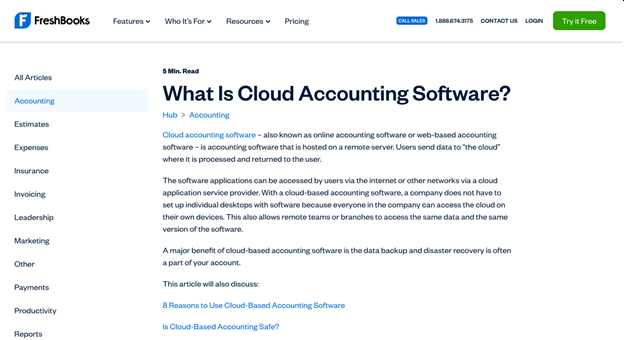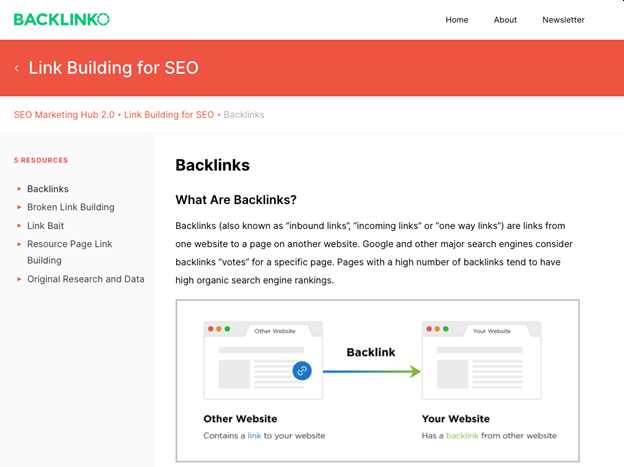5 content optimization tricks that will help you climb Google’s search results

If you want to reach your ideal customers, you need to be creating optimized content that will help you climb the search engine results pages (SERPs). This is part of a process called search engine optimization (SEO), which is a vital strategy for reaching your target audience and ultimately getting more sales.
In this article, we’re going to outline 5 different content optimization tricks you can use to climb the SERPs. Let’s get started.
Choose topics your audience are actually interested in
It might seem obvious, but many businesses often make the mistake of pushing out content without really considering if the topic will appeal to their audience. To optimize your content and get the most out of it, you need to understand your audience and what kinds of information they are searching for.
One great way to come up with topics is to check in with your customer service team to see if there are any questions they commonly get. Creating content-based on these questions will show your customers that you understand their needs and pain points — this will also allow you to show off your expertise, which is great for boosting your SEO.
Keyword research is another great way to come up with high-quality content ideas. Start by putting together a list of topics relevant to your business. Then, plug them into a keyword research tool like Google Keyword Planner. Google will then provide you with a series of relevant keywords and phrases that people are searching for, along with their levels of competitiveness, or how hard they are to rank for, and their average monthly search volumes.
Basing your content on these keywords will help you rank on the SERPs for these specific and relevant phrases that your target audience is typing into search engines.
Target the right keywords, and incorporate them properly
You can’t just target any old keywords with your content, though — to reach the ideal people, you need to ensure you’re targeting the very best phrases. As we discussed above, keyword research is a great place to start when determining which ones to incorporate into your content.
Once you have a list of suggested keywords from a tool like Google Keyword Planner, you need to do some strategizing. For starters, since you’re creating content, you want to be selecting informational (rather than commercial) keywords. These are the likes of “why,” “how,” and “what” questions that will help give a website visitor more information about a certain subject, rather than directing them to a product selection.
Additionally, you’ll need to find a good balance between average monthly search volumes and competitiveness. You want to target high-volume keywords, of course, but if they’re too competitive, you might not have a chance of ranking for them.
Let’s look at a few examples of businesses that target and incorporate keywords into their content well.

For instance, FreshBooks, an online accounting software provider, has done a great job of incorporating relevant keywords into their guide to cloud accounting software.
They have added relevant keywords to their headers, numbered lists, and the body content of this post. Placing keywords in these places gives Google a better idea of what the article is about. Furthermore, relevant phrases have been incorporated naturally, but effectively — and the strategy has worked. This piece of content can be found on the first page of Google for relevant keywords with a collective monthly search volume of 4,850. So, it’s well worth reading the guide to get an idea of how you should be incorporating important phrases into your own writing.

Backlinko, a digital marketing agency, has also successfully targeted relevant keywords in their blog post on backlinks and how to build them. It ranks on the first page of Google for keywords with a collective monthly search volume of 40,300. They incorporate keywords throughout their clickable headers and body content, giving Google a good idea of what the article is about, thus boosting their SEO.
In your own work, be sure to incorporate your preferred keywords into your headers and the introduction of your articles — this will help ensure that Google knows what the main points in your article are, thus giving you an SEO boost.
Always add relevant internal links to your content
Internal linking is extremely important for SEO! This is the process of connecting pages and posts on your own website through hyperlinks. In addition to linking to things like your product or service pages, you can incorporate relevant internal links to other pieces of content. For instance, if you mention a product or service in your blog content, or talk about a topic you have previously covered, you should link to these pages in your posts.
This is a great (and very actionable) SEO strategy. For one, since it’s all your own links, you have complete control over them — you get to choose where you want to guide your readers next. Additionally, internal linking helps give Google more context about what your website covers and how it is structured — by following internal links, Google can figure out the relationship between different pages and rank your site for the best possible queries.
Optimize your images
Including images in your content is vital to making your website as engaging as possible — but don’t forget to optimize them as well, because doing so can help you improve your website’s loading speed and boost your SEO!
Here are a few tips for optimizing your images:
- Name your image files in plain, descriptive language
- Add clear, simple alt text that clearly describes your image
- Reduce the file size of your images using an image compressor
- Choose the right image format — JPEGs tend to take up less disk space, but PNGs are good for simple, low-color images
- Resize your images so that they are viewable, but don’t take up a ton of space on your page
These are all strategies that will give Google more information about what your images show so the search engine can rank you on the SERPs accordingly. Furthermore, taking steps like reducing your file sizes and optimizing your images will help increase your page loading speed, giving you a further SEO boost.
Encourage visitors to take action after reading
When you’re creating content to boost your SEO, you’re ultimately trying to secure more sales. So, be sure to also encourage people to take action after reading your content. Sometimes, people just need to be told what to do — giving them a place to get more information, learn more about your services, sign up for your newsletter, and the like will help to keep their attention longer and lead to more conversions.
To provide you with inspiration, let’s look at a few businesses that encourage people to take action after reading their content.

For instance, Best Value Schools has a wide variety of articles that help prospective students to find the best school for their needs. At the end of their round-up of the cheapest online colleges, Best Value Schools encourages website visitors to use their Degree Finder tool.
A reader can simply plug in the type of degree, category, and subject they are interested in, and Best Value Schools provides them with a list of schools they might be interested in. After reading this article, it’s clear to a website visitor what they need to do next — this type of strategy will encourage people to use the services Best Value Schools has to offer. On your own website, a sophisticated search tool like this one can be a great option if you recommend a variety of different products or services.

Similarly, Helix Hearing Care, a hearing aid company, uses its content to generate more appointments for its business.
For example, within their blog article on how to look after your hearing, there is a contact form that readers can fill out to book a meeting. Website visitors can simply fill in their information, and then Helix Hearing Care will contact them. People looking at this article are likely considering whether or not they need hearing aids — by incorporating this form into their content and making it very easy to use, Helix Hearing Care can help secure themselves more appointments.
If you’re a service-based business, consider offering a contact form at the end of your blog posts. That way, when people come across your website when trying to solve a problem of theirs, they have a next step to take — this will help you secure more customers.
Summary
If you’re creating content for your website, you need to ensure that your work is top-notch so it can climb the Google search engine results pages.
In this article, we outlined exactly how you can do that, including through image optimization, keyword targeting, and more. Start devising your new strategy and get to work!
Author bio & headshot:
 Adam Steele is COO and co-founder of Loganix, which is an SEO fulfillment partner for digital marketing agencies and professionals. The company provides the SEO services that businesses need to grow and achieve their goals. If you enjoyed this article, you can find more SEO guides and templates on the Loganix blog.
Adam Steele is COO and co-founder of Loganix, which is an SEO fulfillment partner for digital marketing agencies and professionals. The company provides the SEO services that businesses need to grow and achieve their goals. If you enjoyed this article, you can find more SEO guides and templates on the Loganix blog.

